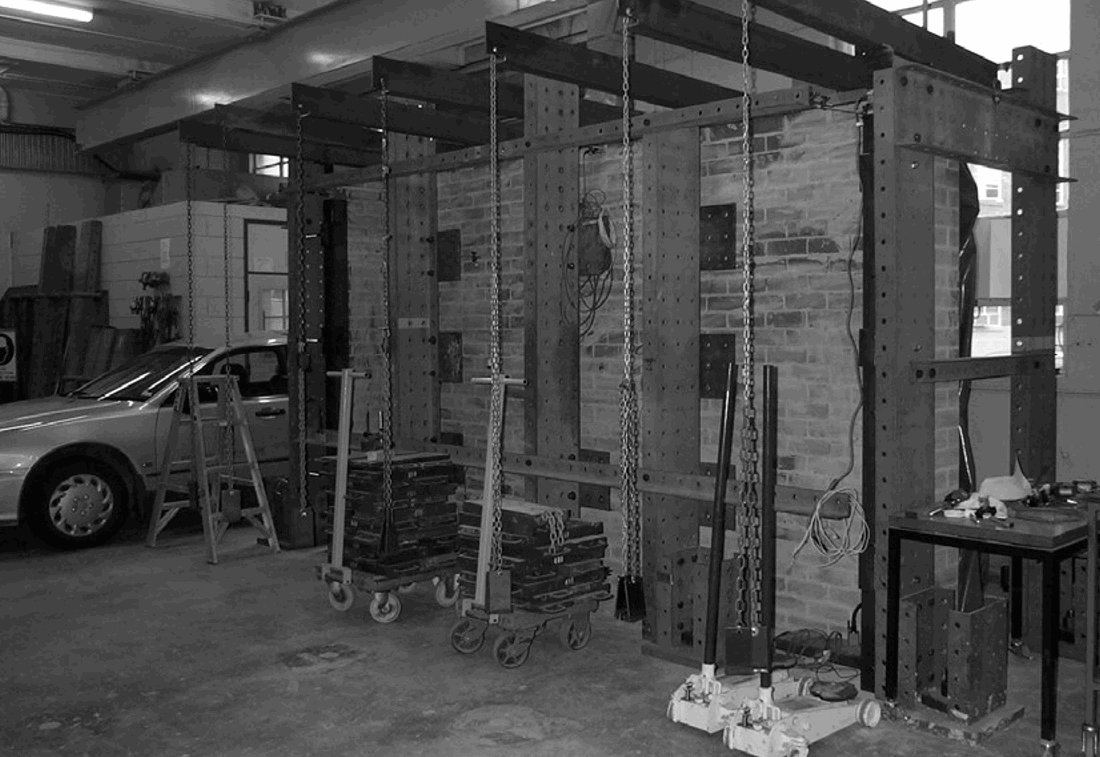M.C. Griffith1 and J. Vaculik2
- Associate Professor, Dept of Civil & Env. Eng., University of Adelaide, mcgrif@civeng.adelaide.edu.au
- PhD student, Dept of Civil & Env. Eng., University of Adelaide, jvaculik@civeng.adelaide.edu.au
ABSTRACT
This paper presents the results of an experimental test program on eight full-scale unreinforced brick masonry walls. Three different levels of vertical precompression were used in the tests and all walls were 2.5 m tall with six being 4 m long and two being 2.5 m long. Six of the eight walls also each had a single window opening (nominally 1.2 m × 1.0 m).
The walls were laterally supported along all four edges. The top and bottom edges were “simply-supported” while the vertical edges were supported by short return walls, which were restrained from rotation so that the two vertical edges could reasonably be considered to be “fixed” rotationally. The walls were loaded using a system of airbags placed between the wall and a reaction frame. The forces going into the reaction frame were recorded using load cells and these loads were plotted versus the mid-wall displacement to characterise the flexural behaviour of each wall. From these plots the ultimate strength of each wall was determined and compared to predictions using the virtual work method in combination with the AS 3700 moment expressions and recently published expressions by Willis [14, 15] for horizontal and diagonal bending moment capacities. The paper concludes with a summary of the accuracy of the analytical predictions and implications for seismic design of brick masonry walls.
KEYWORDS: unreinforced brick masonry, walls, bending, experimental, tests
4c-2



